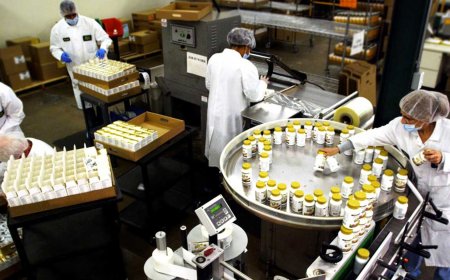More Than Cholesterol: Exploring the Diverse World of Sterol Lipids
When you hear the word "sterol," your mind probably jumps to one famous, and often misunderstood, molecule: cholesterol. Were constantly bombarded with messages about "good" and "bad" cholesterol, and its impact on our cardiovascular health. But what if I told you that cholesterol is just one member of a vast and vital family of molecules called sterol lipids? This diverse group is fundamental to the health of animals, plants, and fungi, playing roles that go far beyond clogging arteries.
Understanding these compounds is crucial, and that's where the science ofSterol Lipids Analysiscomes in, providing a window into the health and disease of virtually all eukaryotic organisms.
What Exactly Are Sterol Lipids?
At their core, sterol lipids are a subclass of lipids defined by a specific four-ring carbon structure. Think of this rigid, flat structure as a universal molecular backbone. Different chemical groups can be attached to this backbone, creating a wide array of sterols, each with a unique function.
- Inanimals, the most prominent sterol ischolesterol. Its an essential component of cell membranes, ensuring they have the right level of fluiditynot too rigid, not too floppy. It's also the precursor to vital molecules like vitamin D, bile acids (which help us digest fats), and steroid hormones such as estrogen and testosterone.
- Inplants, you'll findphytosterols(like sitosterol and campesterol). They perform a similar membrane-stabilizing role as cholesterol and are also involved in plant development and defense.
- Infungi, the primary sterol isergosterol. It serves the same function in fungal cell membranes and is a key target for many antifungal medications.
Why Their Analysis is Critical
Because sterols are central to so many biological processes, the ability to accurately measure them is paramount. When sterol metabolism goes awry, it can have serious consequences. For example, imbalances in cholesterol transport and metabolism are directly linked to atherosclerosis and heart disease. Rare genetic conditions, such as Smith-Lemli-Opitz syndrome, are caused by a defect in the final step of cholesterol synthesis, leading to severe developmental issues.
In biotechnology and agriculture, analyzing sterols can help in developing new drugs or engineering more resilient crops. Therefore, a robustSterol Lipids Analysisservice is an indispensable tool for researchers, clinicians, and drug developers. It allows them to:
- Diagnose and Monitor Disease:Quantifying specific sterols can serve as biomarkers for various metabolic disorders.
- Advance Pharmaceutical Research:Understanding how a drug interacts with sterol pathways is crucial for developing new therapies, from cholesterol-lowering statins to novel antifungal agents.
- Ensure Food Quality:Analyzing the phytosterol content in food products can verify their authenticity and nutritional claims.
The Technology Behind the Analysis
Analyzing sterols isn't simple. They are a diverse group of molecules, often existing in low concentrations within complex biological samples like blood, tissues, or cells. This is where advanced analytical techniques become essential.
The gold standard forSterol Lipids Analysisis a combination of chromatography and mass spectrometry (LC-MS/MS or GC-MS/MS).
- Chromatography (LC or GC):This first step acts like a molecular sorting system, separating the different sterol lipids from each other and from other molecules in the sample.
- Mass Spectrometry (MS):Once separated, the molecules are sent into a mass spectrometer, which breaks them down and measures the mass of the fragments. This creates a unique molecular "fingerprint" that allows for precise identification and quantification of each sterol.
By harnessing these powerful technologies, services like those offered by Creative Proteomics provide the detailed, accurate data necessary to push the boundaries of biological and medical research. From understanding the fundamental mechanics of a cell to developing life-saving drugs, the power to analyze these small lipids has a massive impact.






































